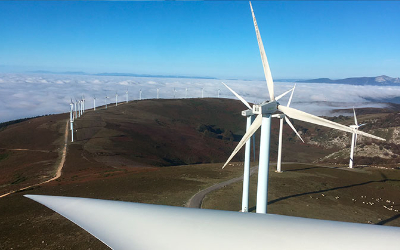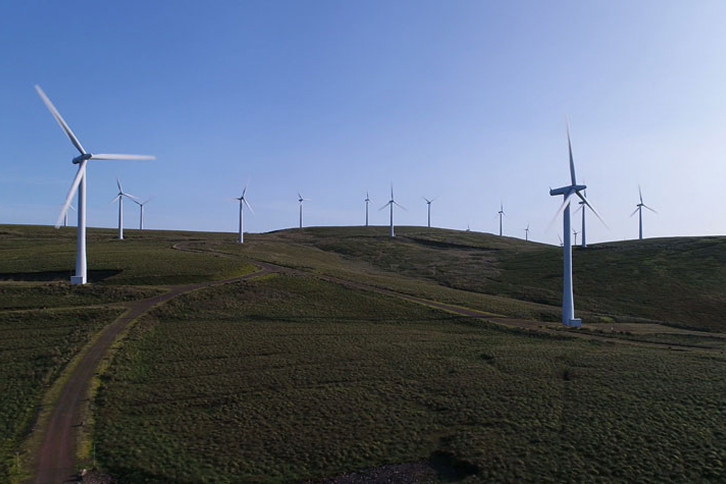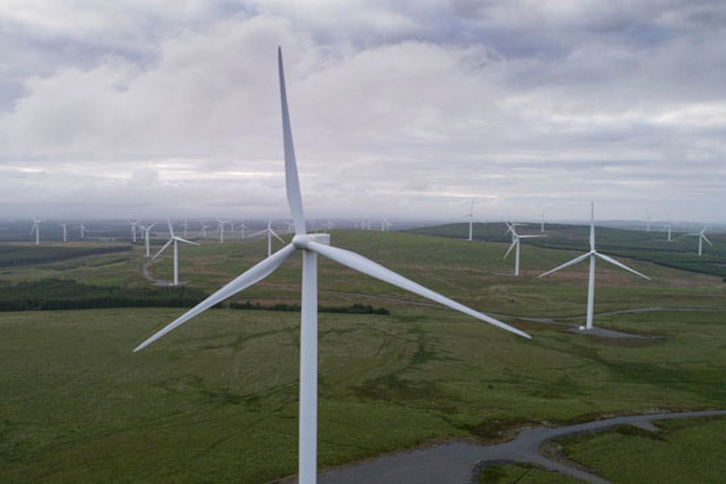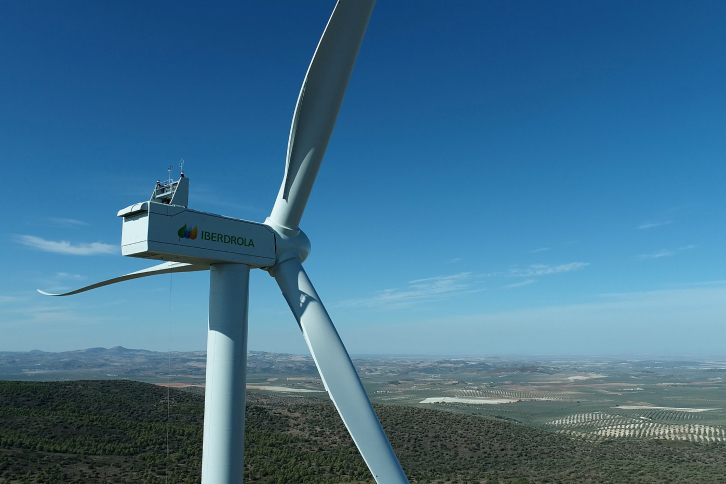Onshore wind energy
Iberdrola, a global benchmark in onshore wind
At Iberdrola we are committed to wind energy, which transforms the power of an inexhaustible resource such as wind into electricity, as a sustainable and valuable investment for the future.

With 20,760 MW of installed capacity worldwide, the Group continues to lead in onshore wind energy, which will receive 24% of the renewable investment under the new 2028 Strategic Plan to further expand its installed capacity in this technology.
Leaders in onshore wind energy
What is onshore wind energy?
Onshore wind energy is generated by harnessing the power of the wind – the movement of air masses – through wind turbines located on land. Thanks to their blades, these wind turbines transform kinetic energy into mechanical rotational energy, which is then used to produce electricity that is connected to the distribution networks. Wind power is a renewable, clean and inexhaustible source of energy that has been used for centuries, with the technologies available at any given time and with different functions.
In addition to onshore wind energy, we also have offshore wind energy, which is produced in the same way through wind farms in the sea. All in all, wind energy is a sustainable, local-economy-boosting and future-enhancing energy source.


Onshore wind: a commitment started more than 20 years ago to lead today "the energy of the future".

We explain in simple terms how onshore wind energy works.
Advantages of onshore wind energy
 Renewable A secure, inexhaustible and local energy source
Mobile Wind farms are dismantled at the end of their useful life and the area recovers
Clean No waste, no toxic gases and no radiation
Green jobs Generating wealth and local employment in rural areas
Agriculture and stockbreeding It allows the development of agricultural and stockbreeding activities in the surrounding area
Renewable A secure, inexhaustible and local energy source
Mobile Wind farms are dismantled at the end of their useful life and the area recovers
Clean No waste, no toxic gases and no radiation
Green jobs Generating wealth and local employment in rural areas
Agriculture and stockbreeding It allows the development of agricultural and stockbreeding activities in the surrounding area
Flagship projects in onshore wind energy
-
Oitis, our largest onshore wind farm project in Latin America

-
El Cabo and Amazon US East: two flagship projects in the US

-
Iberdrola, present in Australia with the world's first wind-solar hybrid plant

-
Cavar, the largest wind farm developed by Iberdrola in Spain in recent years

-
Chafariz reaffirms our commitment to onshore wind energy in Latin America

-
Whitelee, over 15 years as the UK's largest onshore wind farm

-
Iberdrola reinforces its commitment to Cantabria with the new El Escudo wind farm

-
We strengthen our renewable commitment in Greece with the Askio onshore wind complex

-
Strengthening wind power in the UK with Kilgallioch wind farm

What are onshore wind farms like?
Onshore wind farms are basically made up of a set of wind turbines (of different powers and sizes depending on each wind farm), transformers (which raise the electricity from low to medium voltage for distribution throughout the farm), and an electrical substation, responsible for converting the energy into high-voltage current, suitable for transporting the electricity to the installations connected to the distribution network.
Onshore wind farms are installed in locations where data support the prediction of adequate wind quantity. In addition, these onshore wind turbines, which can reach heights of more than 150 metres, coexist with agriculture and livestock farming.
Onshore wind energy
Offshore wind energy
The rotor is the element made up of the three blades of a windmill and the hub that joins them together.
Its function is to capture the force of the wind and convert it into mechanical rotational energy.
Depending on its size, the power of a wind turbine varies.
More about onshore wind energy
What is wind energy, how is it converted into electricity and what are its advantages?
Wind energy, which transforms the power of an inexhaustible resource such as wind into electricity, is a sustainable and valuable investment for the future. Harnessing the wind requires the installation of wind farms, either on land or offshore, with dozens of wind turbines. Find out how this energy is generated and how it is harnessed.
Read more about wind energyWhat is wind energy, how is it converted into electricity and what are its advantages?
Wind energy, which transforms the power of an inexhaustible resource such as wind into electricity, is a sustainable and valuable investment for the future. Harnessing the wind requires the installation of wind farms, either on land or offshore, with dozens of wind turbines. Find out how this energy is generated and how it is harnessed.
Read more about wind energyArticles from our guest authors

















